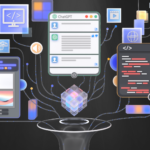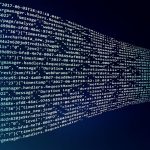Trend #1: The Agile Transformation of IT
Despite the explosion of new technology over the past 10 years, productivity has declined compared to the previous 10 years according to the Organization for Economic Co-operation and Development. This can be attributed to new processes having not kept up with new technologies.

In the hospitality business, Airbnb has had access to the same technology as traditional hotels, but it has created a new business model that has enabled it to grow to a market valuation of USD$30bil in less than 10 years. Digital transformation is about transforming the business through people and process, as well as through innovative use of technology. As a result, agile infrastructure, cloud and the benefits of DevOps will gain greater attention as a way to speed up the development and deployment of applications and services with less defects and wasted effort.
“The biggest benefit of agile infrastructure and cloud delivery models is the empowerment of those with the most business insight and most innovative ideas to drive their own technology projects. It’s really about putting the power of innovation into the hands of those with the best ideas,” added Skingsley.
Trend #2: Accelerating Transition to Cloud
Cloud-first strategies are the foundation for staying relevant in a fast-paced world, according to Ed Anderson, research vice president at Gartner. The Asian market has been quick to embrace this, with Asia leading the world in this year’s Cloud Readiness Index by Asia Cloud Computing Association.
“It is clear that the predominant cloud model for the foreseeable future will be hybrid, as most understand the agility benefits of cloud but are not willing to move entirely to public cloud at this point. We expect this to continue throughout 2017,” comments Skingsley.
As a result, IT managers across APAC will be focused on developing skills in cloud monitoring, cloud workload performance and security management, and cloud capacity management. Instead of buying infrastructure from different vendors and knitting them together with management software, IT will want access to the converged systems required to deliver infrastructure-as-a-service.
These will enable enterprises to drive out even more cost and streamline infrastructure operations even further by combining converged solutions, like Hitachi’s United Compute Platform, with cloud management portals, like VMware vRealize, to deliver a pre-engineered approach for public, private, and hybrid cloud via a single management interface.
Trend #3: Bimodal IT
Bimodal IT refers to two modes of IT:
- Mode 1: Traditional — emphasizes safety, accuracy and availability.
- Mode 2: Nonlinear — emphasizes agility and speed.
In the same way that hybrid cloud will continue to be the predominant model for years to come, so too will bimodal IT continue to be necessary. While many may wish for the ability to simply do away with legacy application stacks and start afresh, the reality of the need for business continuity built on well understood and supported mission-critical systems continues.
IT must be able to manage both modes and implement systems that can bridge between them. Converged infrastructure solutions can modernize mode 1 systems and bridge to mode 2 ones via orchestration and cloud ready interfaces.
Skingsley adds, “From a storage perspective it is important that data from both IT modes can be leveraged, so organizations will look more to systems that can bridge the gap between the two. This means the ability to present cloud protocols, the capability to be instantiated on-premise or in public clouds and to facilitate data mobility between these environments.”
While the need to operate bi-modally may be seen as a necessary evil, organizations will not tolerate data being stranded in mode 1 islands at the cost of valuable business insight. Tools like Pentaho Enterprise Data Integration, that can bring together the data warehouse of mode 1, with the unstructured data of mode 2 to provide users with a clear view of all their data, will gain significant traction.
Trend #4: A Centralized Data Hub
Data is becoming increasingly valuable. Recent IDC research revealed that 53% of organizations in the region consider big data and analytics important and have adopted or plan to adopt it in the near future. Companies are finding new ways to correlate and merge data from different sources to gain more insight, while repurposing old data for different uses.
“It is a clear lesson learnt from the highly disruptive internet-based businesses that the ability to wield data effectively is extremely valuable. Many of these businesses are fundamentally data, a simple interface and insightful business logic. Traditional enterprises realize now that they have not used their valuable data as effectively as they might have,” says Skingsley.
To ensure the governance and accessibility of this data, IT needs to create a centralized data hub for better management, use and protection of their data. This centralized hub will need to be an object store that can scale beyond the limitations of traditional storage systems, ingest data from different sources, and provide search across public and private clouds as well as mobile devices.
Skingsley calls this the “repository of everything an organization knows” and believes that organizations can no longer abide by archiving or backup systems that leave this potentially important data stranded.
Trend #5: Smart IT – the Integration of IT and OT into IoT
The networking of things will affect every aspect of our lives, and while this may not become a major trend for APAC as yet, the decisions we make in IT in 2017 should be made with an eye to Internet of Things (IoT).
The integration of IT and operational technology (OT) with analytics is the first step. Today, IoT requires data scientists and researchers with deep domain expertise and most projects are in the proof-of-concept stage. In 2017 we will be at the stage where we have the recipe for IoT projects, like train-as-a-service or industry 4.0.
“IoT is in fact, more of understanding the operational technology first before embedding the IT into it, which the Hitachi group, being in OT for the last 100 years, is well-placed to execute,” Skingsley opinionated.
(Part two of this article will be published on 30th January 2017)








